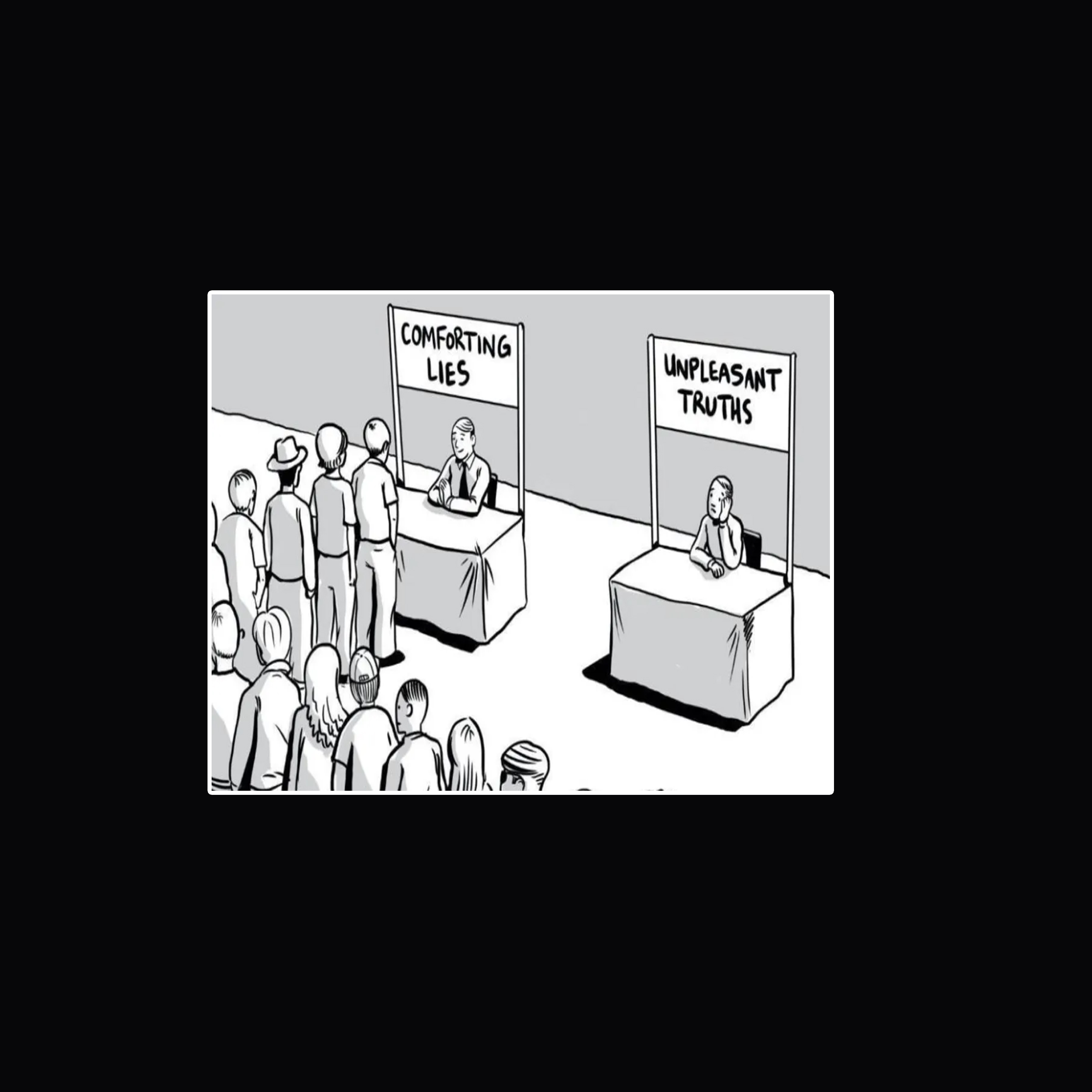Have you ever caught yourself justifying a questionable financial choice with a little white lie? You’re not alone. We’ve all rationalized spending or investing decisions at some point, only to realize later that honesty with ourselves is the foundation for lasting financial success.
What we believe and tell ourselves about money shapes our financial behaviors. When we fall for “money lies,” we not only risk our wallets but also cloud our judgment, inflate our confidence, and create obstacles to building wealth. Recognizing and confronting these unhelpful beliefs is the first step toward smarter choices and meaningful progress toward your financial goals.
Seven Common Money Lies About Investing
- There’s too much uncertainty to invest right now.
- I’m not wrong—the market is.
- The current trend will continue indefinitely.
- I just need to hold on to losing investment until I break even.
- Past performance can predict future results.
- I just need to find an investment guru.
- Investing alone will make me wealthy.
How to Avoid These Traps
Accept that the future is unknowable and uncertainty is part of investing.
- Educate yourself about how markets truly work.
- Develop and follow a sound investment process.
- Regularly monitor and adjust your plan as your life evolves.
The Power of Loss Aversion
The fear of losing money is powerful, so powerful, in fact, that psychologists have shown losses feel about twice as painful as equivalent gains feel good. This bias, known as loss aversion, often leads investors to make risky moves to recover losses or, conversely, to avoid investing altogether after a setback. Neither approach is sensible. Over time, both positive and negative price swings tend to balance out, so patience and discipline are key.
You're Not as Rational as You Think (And That's Okay!)
Even legendary investors like Warren Buffett and George Soros are not immune to the quirks of human psychology. Our brains rely on cognitive shortcuts, biases, that once helped us survive but now often backfire in financial markets. The important thing is to recognize these mental traps and learn to work around them.
WYSIATI: What You See Is All There Is
In other words, we often make decisions based on only part of the information available, which can lead to costly mistakes. Daniel Kahneman, Nobel laureate and author of Thinking, Fast and Slow, coined the concept of WYSIATI: our tendency to build a complete story from incomplete information. Glancing at a few numbers or headlines, our brains fill in the gaps, convincing us we have the full picture. But this illusion can cost real money. The first step to avoiding this pitfall is simply acknowledging that our brains have blind spots.
The Five Most Dangerous Investing Biases—and How to Beat Them
- Confirmation Bias: We seek evidence that supports our beliefs and ignore the rest.
- Survival Tip: Before buying a stock, write down three reasons not to invest. If you can’t, you may be too emotionally invested.
- Anchoring Bias: We fixate on irrelevant reference points, like the price we paid for a stock. “I can’t sell at $80—I bought it at $100.” Note to self: The market doesn’t care what you paid.
- Survival Tip: Ask yourself: Would I buy this stock today at its current price? If not, consider selling.
- Overconfidence Bias: We believe we know more than we do and think we’re the exception. Most investors think they’re above average—which is mathematically impossible!
- Survival Tip: Keep a decision log and review your past calls. Your own track record is often the humblest teacher.
- Loss Aversion: The tendency to feel losses more strongly than gains. This leading to panic selling or holding losers too long.
- Survival Tip: Focus on the long-term process, not short-term pain. Small losses are part of investing.
- Recency Bias: We assume recent trends will continue. Markets go up, we expect more upside; markets go down, we expect doom.
- Survival Tip: Zoom out and look at the full market cycle. The last few weeks don’t define the future.
Respond, Don’t React: Advice from the Experts
Behavioral financial advisor Yohance Harrison recommends “training your brain how to respond, rather than just react.” When your portfolio is volatile, pause and ask:
- What are my core values?
- What are my goals for this investment?
- When do I need this money?
- Has my plan changed?
- Do I understand why this is happening?
- What are my options and the possible consequences of acting?
Pausing before making decisions is wise, but awareness alone may not be enough. Kahneman and other experts suggest using structural safeguards, such as automated stop-loss orders or professional advisors, to help counteract our ingrained biases and protect our investments.
Conclusion
The journey to financial freedom starts with honesty, with ourselves and with our money. By recognizing the lies we tell ourselves and the biases that quietly shape our decisions, we can build better habits, make wiser choices, and ultimately, reach our biggest financial goals.
This week, choose one bias from the list and track how it influences your financial decisions. Share your insights with a friend or advisor to stay accountable on your journey to financial freedom.
Be well,




